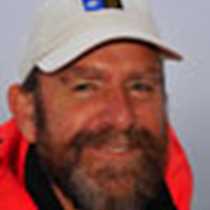Antarctic Sound and the Weddell Sea
We woke to find ourselves at Brown Bluff, a giant cliff at the very tip of the Antarctic Peninsula. At first all was monochrome, black ramparts soaring 2000’ into the cloud, soft grey tones where the talus was dusted with snow, and black and white penguins commuting along the cobble beach. Indeed, as our first photo shows, our arrival also caused much excitement amongst the locals, who all turned out to stare.
Our trusty Zodiacs navigated a maze of grounded bergs, leaping penguins and rocky shallows to bring us ashore, and as the cloud base lifted, we could see the top of the bluff: hundreds of feet of tawny volcanic ash overlying ancient lava flows. In this sheltered but precarious setting, over 50,000 penguins throng a crowded city, suburban Gentoo and downtown Adelies. Overweight Gentoo teenagers sprawled about the beach in their two-tone fleece tracksuits. But all the action was from the Adelies, commuting energetically to and from the beach, with their Mohican offspring making their first terrified plunges into an alien sea. During Zodiac tours of the icebergs, we came upon little shocked clusters of them on the grounded bergs, recovering from the shock of their first solo swim. Sprawled on icefloes nearby, waited their worst nightmare: giant leopard seals, the antithesis of a friendly lifeguard – these are suddendeathguards, capable of consuming six hapless chicks an hour.
In the early afternoon we wove our way through Fridtjof Sound into the Weddell Sea but a shifting maze of giant tabular bergs and pack ice forced our retreat back up Antarctic Sound. This soon produced our final adventure though: an encounter with up to 20 Killer Whales which we accompanied for over an hour while our research scientists Bob Pitman and John Durban attempted to fix satellite tags on them from a bouncing Zodiac in a choppy sea. Their dogged pursuit was unsuccessful, but gave us first-hand insight into cutting-edge science, enlivened by thrilling views of the ultimate Antarctic predator.




